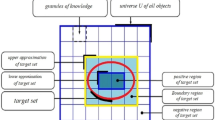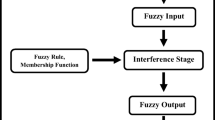Abstract
Mass customization (MC) is an emergent concept in industry intended to provide customized products through flexible processes in high volumes and at reasonably low costs. The method of configuration is one of important ways to realize quickly product customization. But, in business, particularly through the Internet, a customer normally develops in his mind some sort of ambiguity, given the choice of similar alternative products. This paper proposes a new approach to product configuration by applying the theory of fuzzy multiple attribute decision making (FMADM), which focus on uncertain and fuzzy requirements the customer submits to the product supplier. The proposed method can be used either in the product data management system or e-commerce websites, with which it is easy for customers to get his preferred product according to the utility value with respect to all attributes. Finally, the digital camera is taken as an example to further verify the validity and the feasibility of the proposed method.
Similar content being viewed by others
References
Agard B., Kusiak A. (2004) Data-mining-based methodology for the design of product families. International Journal of Production Research 42(15): 2955–2969
Andreas, K., Sascha, S., & Ralph, B. (2001). Evaluation of a similarity-based approach to customer-adaptive electronic sales dialogs. International Conference on User Modeling, pp. 40–50.
Cheng C.H. (1998) A new approach for ranking fuzzy numbers by distance method. Fuzzy Sets and Systems 95: 307–317
Cipriano F., Fabrizio S. (2002) Managing for variety in the order acquisition and fulfillment process: The contribution of product configuration systems. The International Journal of Production Economics 76: 87–98
Fabrizio, S., Cipriano, F., & Manus, R. (2002). How to mass customize: Product architectures, sourcing configurations. Business Horizons, 61–69.
Giovani D.S., Denis B, FlaH S.F. (2001) Mass customization: Literature review and research directions. The International Journal of Production Economics 72: 1–13
He X.G. (1998) Fuzzy theories and fuzzy techniques in knowledge processing. National defense industrial publishing company, Beijing
Hegge H.M.H., Wortmann J.C. (1991) Generic bill of material: A new product model. International Journal of Production Economics 23: 117–128
Martin, M. V., & Ishii, K. (2000). Design for variety: A methodology for developing product platform architecures, Proceedings of the 2000 ASME Design Engineering Technical Conferences, DETC2000 / DFM-14021, Baltimore.
Mohanty B.K., Bhasker B. (2005) Product classification in the internet business—A fuzzy approach. Decision Support Systems 38: 611–619
Olcer A.I., Odabasi A.Y. (2005) A new fuzzy multiple attributive group decision making methodology and its application to propulsion/manoeuvring system selection problem. European Journal of Operational Research 166: 93–114
Paul J.P. Slater. (1999) Pconfig: A Web-based configuration tool for configure-to-order products. Knowledge-Based Systems 12: 223–230
Pine B.J. (1993) Mass customization: The new frontier in business competition. Harvard Business School Press, Boston
Ping Y.C., Tsung T.C. (2001) Analysis of assembly through product configuration. Computers in Industry 44: 189–203
Tseng, M. M., & Jiao, J. X. (1998). Design for mass customization by developing product family architecture. ASME Design Engineering Technical Conferences, Atlanta, Georgia.
Tseng H.E., Chang C.C., Chang S.H. (2005) Applying case-based reasoning for product configuration in mass customization environments. Expert Systems with Applications 29: 913–925
Xu Z.S. (2002) Study on method for triangular fuzzy number based multi attribute decision making with preference information on alternatives. Systems Engineering and Electronics 124(18): 9–12
Yang T., Chou P. (2005) Solving a multiresponse simulation-optimization problem with discrete variables using a multiple-attribute decision-making method. Mathematics and Computers in Simulation 68: 9–21
Yao J.S., Wub K. (2000) Ranking fuzzy numbers based on decomposition principle and signed distance. Fuzzy Sets and Systems 116: 275–288
Zhu B., Jiang P.Y. (2005) An approach to configuring product family using rough set theory. The International Journal of Product Development 2: 155–169
Author information
Authors and Affiliations
Corresponding author
Rights and permissions
About this article
Cite this article
Zhu, B., Wang, Z., Yang, H. et al. Applying fuzzy multiple attributes decision making for product configuration. J Intell Manuf 19, 591–598 (2008). https://doi.org/10.1007/s10845-008-0132-2
Accepted:
Published:
Issue Date:
DOI: https://doi.org/10.1007/s10845-008-0132-2




